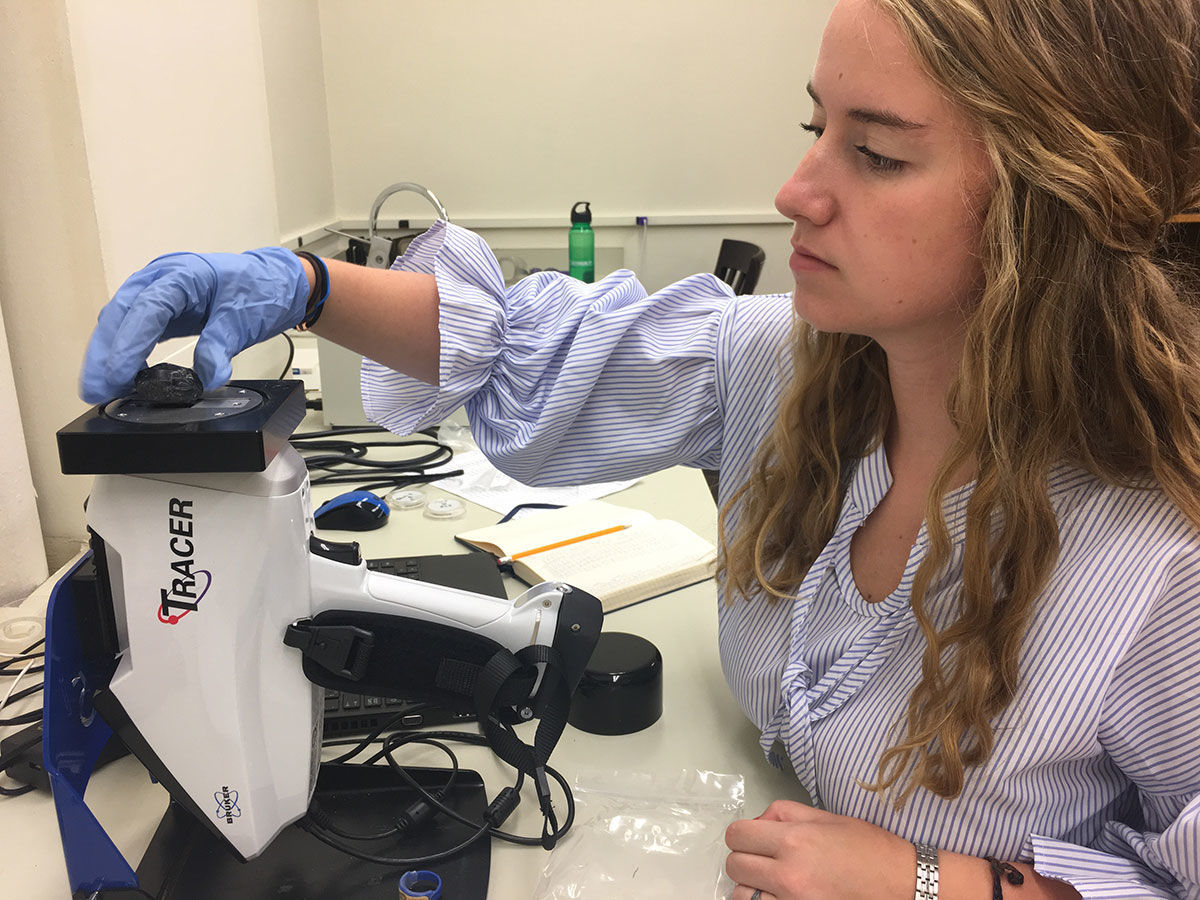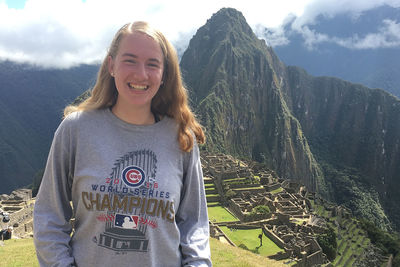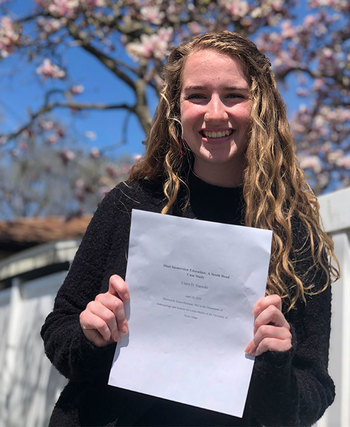
Firing a portable X-ray fluorescence scanner at 2,000-year-old artifacts last summer, Claire Stanecki discovered the value of hands-on education.
A 2020 graduate who majored in anthropology and Spanish, Stanecki’s Arts and Letters education has been defined by exploring nontraditional forms of learning — from conducting research at a museum to studying the benefits of bilingual education in a local school.
“The ability to learn about something and actually go interact with it is so incredibly mind-blowing,” she said.
“I would like to work with people and produce concrete results. Arts and Letters has really taught me how to foster creativity in professional and academic outlets.”
An iceberg of education
With a grant from the Department of Anthropology, Stanecki spent last summer working at the Field Museum in Chicago, working with artifacts from the Hopewell Collection — obsidian blades, flasks, and spears used by Native Americans in Ohio more than two millennia ago.

Scan after scan, she studied the chemical composition of the objects produced by the pXRF, logging measurements that would be systematized for the museum’s collection and aid Notre Dame assistant professor Mark Golitko’s research on their origins.
To explore the movement of resources across communities, Stanecki compared the samples with raw obsidian from New Mexico, Yellowstone, and California.
“The opportunity to work with these artifacts and get a glimpse at the inner workings of a world-class museum was absolutely invaluable to me,” she said.
When she wasn’t in the lab, the research intern browsed archives of the objects dating back to the early 1900s, toured the 40 million artifacts kept in the museum’s underground complex, and became increasingly fascinated by the ecosystem and culture of the museum itself.
“The museum is kind of an iceberg — 90 percent of its operations are under the surface and not seen by the public,” she said.
Concrete results

Back in South Bend, Stanecki spent much of her junior and senior year digging into other alternative forms of learning.
In fall 2018, as part of a course on Mexican immigration, she conducted a case study of a two-way immersion classroom at Holy Cross School in South Bend. Launched in 2017 in collaboration with the Institute for Latino Studies and the Alliance for Catholic Education, the program places native Spanish-speaking and English-speaking kindergarteners in the same classroom, where the primary language of instruction is Spanish.
After completing her research brief on the subject, she was even more determined to explore and advocate for the benefits of such a system. Working with Karen Richman, the ILS director of undergraduate studies, she developed a senior thesis project that aims to show that speaking multiple languages increases learning and brain development in young children.
She returned to the Holy Cross program, where she analyzed data from parent surveys, interviewed program directors and faculty, and researched bilingual education through the lens of linguistic anthropology.
Her passion for the impact and importance of language was solidified during a semester studying abroad in Toledo, Spain, and while teaching English to students in Peru as part of the Center for Social Concerns’ International Summer Service Learning Program.
“Ultimately, I hope to show how language affects how we move through the world,” she said.
As her time at Notre Dame concludes, Stanecki hopes to work professionally in an area related to anthropology or education, ideally in a museum or art gallery setting.
“I would like to work with people and produce concrete results,” she said. “Arts and Letters has really taught me how to foster creativity in professional and academic outlets.”
Originally published by at al.nd.edu on May 20, 2020.